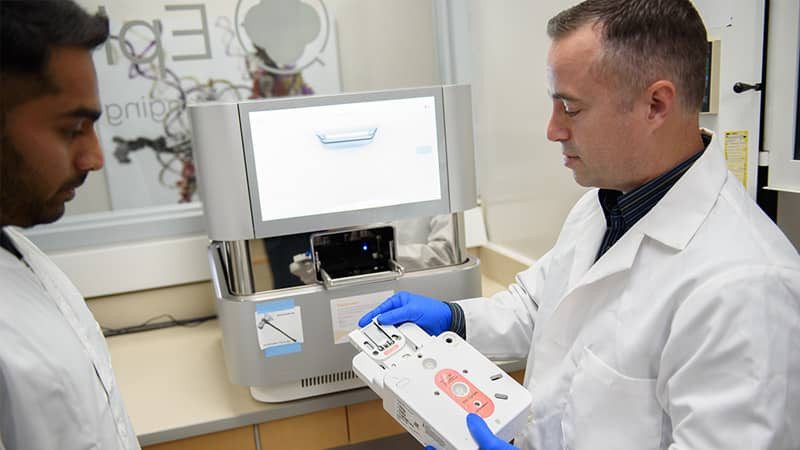Epigenomic analysis of formalin-fixed paraffin-embedded samples by CUT&Tag
Henikoff et al. Nature Communications, 2023. PMID: 37739938
Chromatin mapping assay: CUTAC (CUT&Tag modified for chromatin accessibility)
EpiCypher Products: CUTANA pAG-Tn5 for CUT&Tag (15-1117) and SNAP-Certified™ H3K4me2 antibody (13-0027)
Cell types: Formalin-fixed paraffin-embedded (FFPE) mouse tissues, including brain tumors, intrahepatic cholangiocarcinoma tumors, healthy brain, and healthy liver
Targets: H3K27ac, RNA Polymerase II Serine 5 phosphorylation (RNAPII-Ser5p; paused RNA Pol II), RNA Pol II Serine 2 and Serine 5 phosphorylation (RNAPII-Ser2,5p; elongating and paused RNA Pol II)
Background & Description: FFPE is the global standard for tissue preservation. Thousands of samples are stored in FFPE blocks, providing a massive resource to the biomedical research community. However, chromatin mapping approaches are historically incompatible with FFPE tissues, due to chromatin damage and high background inherent to heavy cross-linking. Previous strategies, such as ChIP-seq, also lacked the sensitivity needed to resolve target signal and struggled to generate reliable data from small inputs. Available chromatin accessibility assays, such as ATAC-seq, have high sensitivity, but are designed for native samples. Although advances have been made in recent years (e.g. FFPE-ATAC, FACT-seq), profiling from FFPE tissues remains a major challenge.
In CUTAC (Cleavage Under Targeted Accessible Chromatin) assays, a low-salt pAG-Tn5 tagmentation step is used to release chromatin fragments marked by paused RNA Polymerase II (RNAPII-Ser5p), H3K27ac, or H3K4me2 antibodies. Here, Henikoff and colleagues optimized CUTAC for chromatin accessibility mapping in FFPE tissues, generating high-quality data from multiple FFPE samples.
Why it makes the list: The development of FFPE-CUTAC assays offers vast improvements to competing technologies. The simple protocol can be performed in two days and is compatible with direct-to-PCR CUT&Tag Kits, making it easy for others to try this strategy. Compared to FFPE-based FACT-seq assays, CUTAC shows improved signal to background and an increased fraction of reads in peaks (FRiP), indicative of high assay sensitivity. In addition, they were able to use CUTAC data to distinguish healthy tissue vs. tumor tissue on the same tissue section.
CUTAC makes profiling from FFPE samples a reality and opens the door to countless patient samples, mouse models, and more. The automation of related CUT&Tag assays will drive additional applications in clinical and pharmaceutical research for investigations of novel chromatin pathways.

